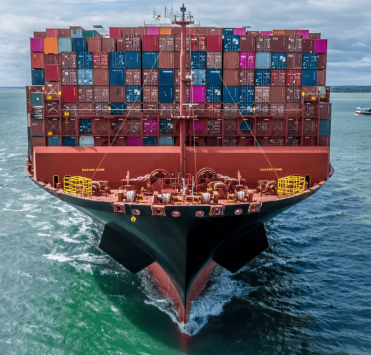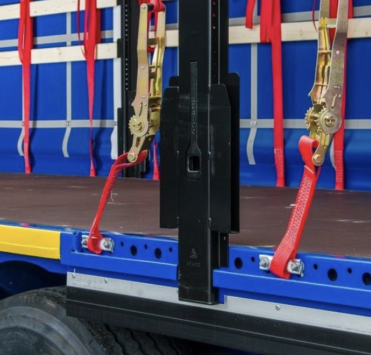Transport of dangerous goods: exempt and limited quantities

Transportation of dangerous goods from Europe to Ukraine is a complex process that requires compliance with strict safety regulations and standards. In this article, we will analyze in detail the thresholds for exemption for the transport of dangerous goods under ADR, which allow the transport of certain quantities of hazardous substances without the need to obtain a special permit. This approach is important for companies importing dangerous goods on international routes, in particular, from Europe to Ukraine.
ADR (abbreviated from the French ADR - Accord Dangereux Routier) is an international agreement governing the transport of dangerous goods by road. Full name: European Agreement concerning the International Carriage of Dangerous Goods by Road. The ADR was developed in 1957 under the auspices of the United Nations and adopted in 1968 to ensure uniform standards and requirements for the carriage of dangerous goods across the borders of different European countries.
Key aspects of ADR
ADR sets out the rules and requirements for:
- Classification of dangerous goods - goods are divided into classes according to their degree of danger (e.g. gasses, flammable liquids, oxidizing substances and corrosive materials).
- Packaging and labeling - the requirements for packaging and special labeling for each class of hazardous substances are defined.
- Documentation - for each transport of dangerous goods, a package of documents must be prepared, including a description of the cargo, its quantity and hazard class.
- Vehicle equipment - vehicles transporting dangerous goods must meet technical requirements, such as fire extinguishers, locking devices and warning labeling.
- Personnel training - drivers and other employees involved in the transport must be trained and certified.
- Precautionary measures - compliance with safety measures, including protective suits for drivers, and measures to prevent spills or accidents.
ADR applies in most European countries and a number of other countries that have ratified the agreement. It covers the transport of dangerous goods between countries and also applies domestically if national legislation recognizes its provisions. The ADR is regularly updated to reflect changes in technology, standards and safety requirements.
The purpose of ADR is to reduce the risks associated with the transport of hazardous substances, to ensure human safety and to protect the environment. The agreement allows for standardization of requirements, simplifying the transport of dangerous goods between countries, which is especially important for international logistics.
For companies handling dangerous goods, compliance with ADR requirements is mandatory, and violation of these rules can lead to fines, delays in transportation and even cancellation of licenses.
What does exempt and limited quantities of dangerous goods mean?
The threshold for exemption from dangerous goods transport permits is the maximum amount of dangerous goods that can be transported without obtaining a special permit. These thresholds are strictly regulated by ADR and depend on the class of hazardous substance, its packaging and the type of vehicle. Transporting dangerous goods within these thresholds allows logistics companies to simplify the process and minimize the cost of paperwork, which is especially important for those involved in the transport of dangerous goods from the EU to Ukraine.
Main categories of ADR exemption for international transport
The ADR identifies three key exemption categories that determine the conditions for the transport of different classes of dangerous goods:
- Quantity per vehicle exemption - allows the transport of up to a certain volume for each type of hazardous substance.
- Exemption by packaging group in limited (LQ) and exempt quantities (EQ) - for small volumes with less stringent requirements.
- Special packaging and labeling exemption - requires packaging and labeling that is resistant to mechanical damage, which is especially important for safe delivery.
These exemptions apply to various classes of hazardous substances, including gasses, flammable liquids, toxic substances, oxidizing and corrosive substances, which makes international transport easier.
Thresholds by class of hazardous substances for international transport
The carriage of dangerous goods is permitted under the simplified requirements of ADR and the Regulations, provided that the quantity of dangerous goods on the transport unit does not exceed the prescribed limits. These limits and exceptions are prescribed in sub-section 1.1.3.6 of ADR (paragraph 1.7 of the Regulations). By complying with these quantity limits, the transporter can avoid most of the standard requirements for the transport of dangerous goods. This allows transport to be organized with lower costs and simplified procedures, which is particularly useful for companies transporting small consignments of dangerous substances or articles.
For simplified transport, it is important to understand that all dangerous goods are classified into transport categories. Each dangerous substance is assigned a category from 0 to 4, which is indicated in column 15 of the Dangerous Goods List. For example, if a cargo is assigned to transport category ‘0’, its empty uncleaned packaging also falls into category ‘0’. On the other hand, empty uncleaned packagings from substances in categories 1, 2, 3 or 4 are always in transport category ‘4’. This distinction allows for more accurate calculation of allowable quantities and compliance with the regulations.
The term ‘maximum quantity per transport unit’ refers to different measures depending on the type of consignment:
- For articles , the gross mass in kilograms is used (for Class 1 explosives, the net mass is taken into account).
- For solids, liquefied and refrigerated gases, the net weight in kilograms.
- For liquids and compressed gases, the nominal capacity of receptacles in litres.
When one type of dangerous goods is transported per transport unit, the maximum quantity can be found in column 3 of Table 7.4. In the case of transporting goods belonging to different transport categories, the calculation is carried out according to the formula:
- For category 1, the result is multiplied by 50.
- For some dangerous goods of category 1 with UN numbers 0081, 0082, 0084 and others - multiplied by 20.
- For category 2 - multiplied by 3.
- For category 3 - not exceeding 1000.
This calculation does not include dangerous goods that are exempt from ADR and the Regulations, such as goods carried in limited or exempt quantities and those in transport category 4. These exempted consignments are also subject to a simplified procedure, which allows flexibility in the transport process and more accurate planning of consignment volumes per transport unit.
Requirements for the carriage of dangerous goods in exempt volumes
Despite the exemption from permits for the transport of dangerous goods, ADR requires a number of conditions to be met to ensure safety during the transport of dangerous goods:
- Labeling of packages and vehicle: The vehicle and packaging must be labeled in accordance with ADR regulations to indicate the hazard class.
- Protective equipment for the driver: The driver must have access to personal protective equipment, which is especially important in international transport.
- Cargo securing: Dangerous goods must be secured to prevent damage and leakage.
- Documentation: The driver is required to have a document describing the class, type and quantity of dangerous goods being transported.
These conditions are particularly important for companies importing dangerous goods from Europe to Ukraine, where safety and labeling requirements may differ from country to country.
The use of exemption thresholds for the transport of dangerous goods allows logistics companies to reduce costs and simplify the clearance process. At the same time, it is important to comply with the requirements for packaging, labeling and securing the cargo. For companies involved in the transport of dangerous goods from Europe to Ukraine, compliance with these ADR rules is an important factor in ensuring safety and minimizing risk.
The Save Pro Solutions team has vast experience in the transport of dangerous goods, which allows us to effectively solve any logistics-related problems. We offer our customers not just standard solutions, but an individual approach that meets all safety requirements and regulations. Our experts guarantee high-quality execution of each operation, minimizing risks and ensuring full compliance with standards. With us, you get not just a partner, but an expert in the field of dangerous goods logistics who will always find the best solution for your business.









